Abstract
We have found whole human platelets, granulocytes, and mononuclear leukocytes to possess high affinity for the toxic lipopolysaccharide from all gram-negative bacteria tested. We have extracted these cells and platelets with n-butanol-water; all endotoxin-binding activity resided in the organic phase. These endotoxin-binding extracts did not block serologically active groupings on endotoxins or receptors on the erythrocytes. The specificity of these still crude materials was less that that of the highly purified erythrocyte lipopolysaccharide receptor previously described by us, since they bound some bacterial antigens not related to endotoxins. Depending on source, the n-butanol extracts contained 40 to 52% glycerophosphatides (most active), 15 to 22% sphingomyelin, 17% cholesterol, less than 2 to 5% triglycerides, and 7 to 13% inactive peptide. The most active substances in the n-butanol extract were soluble in petroleum ether, whereas the peptide and sphingomyelin were not. Thus, no constituent protein, carbohydrate, or nucleic acid was present in the most highly active material. Polyacrylamide gel electrophoresis of the petroleum ether-soluble material showed for each extract one lipid band only, which was well defined and migrated similarly to phosphatidyllipids. Because of the lipidic nature of the inhibitory substances from leukocytes and platelets we also tested the lipid A component of bacterial endotoxins and some of its derivatives. Lipid A inhibited endotoxin coating of erythrocytes. De-O-acylation of lipid A left amide-linked 3-D-hydroxymyristic acid intact and increased the inhibitory activity of lipid A 20-fold. Complete de-O- and de-N-acylation destroyed its inhibitory effect.
Full text
PDF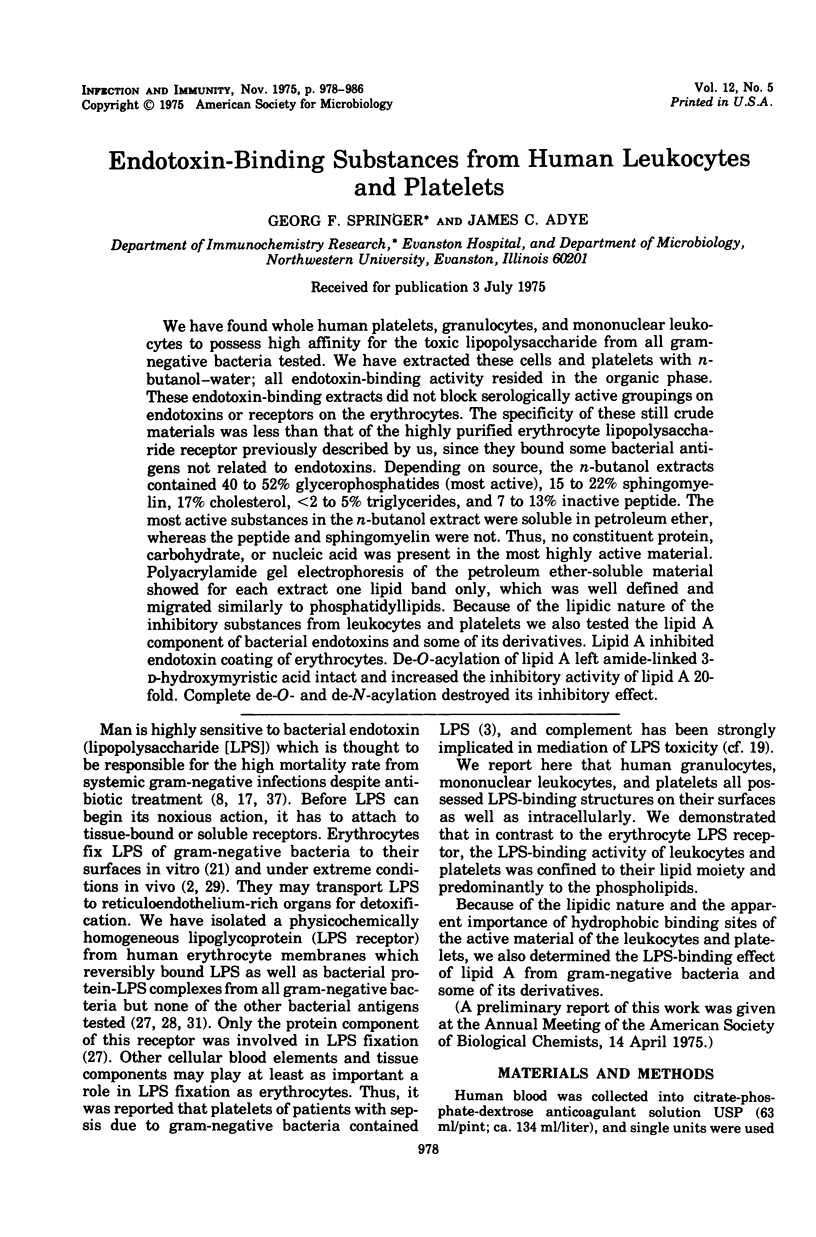
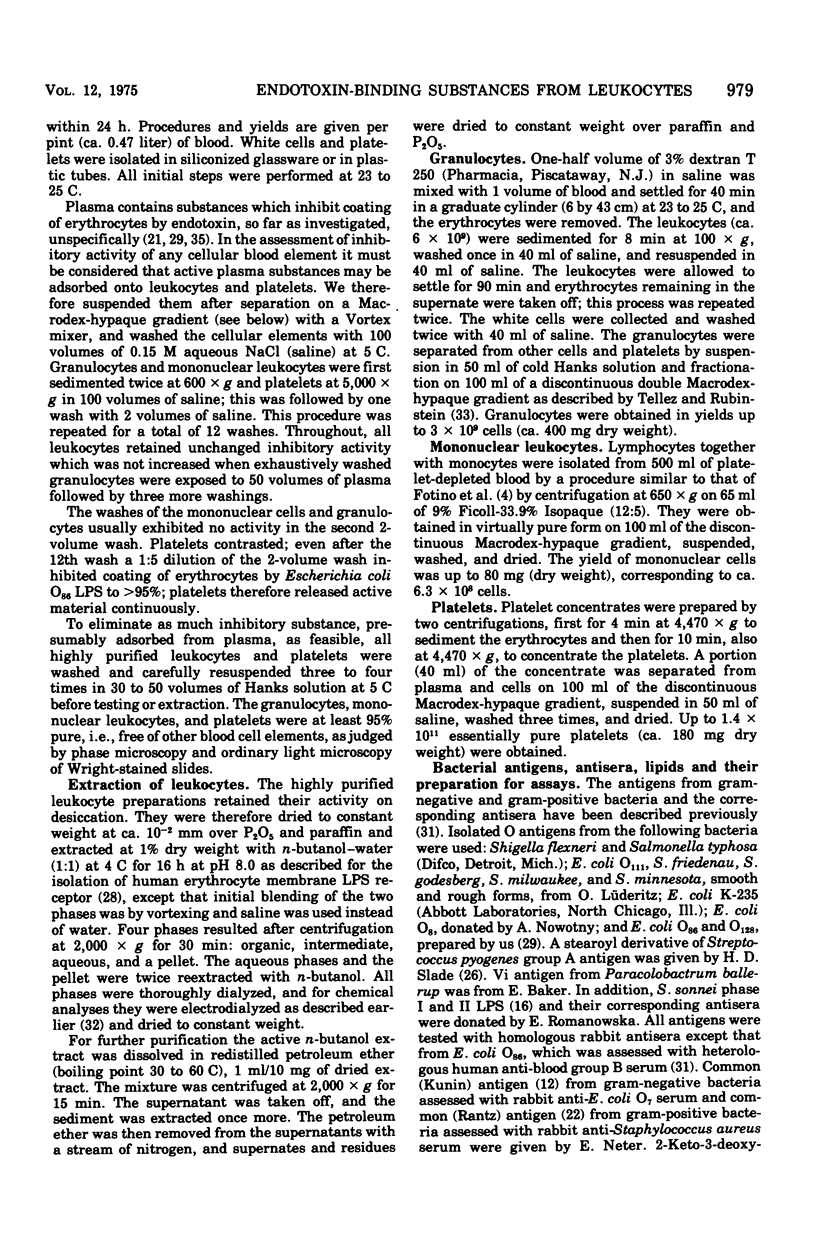
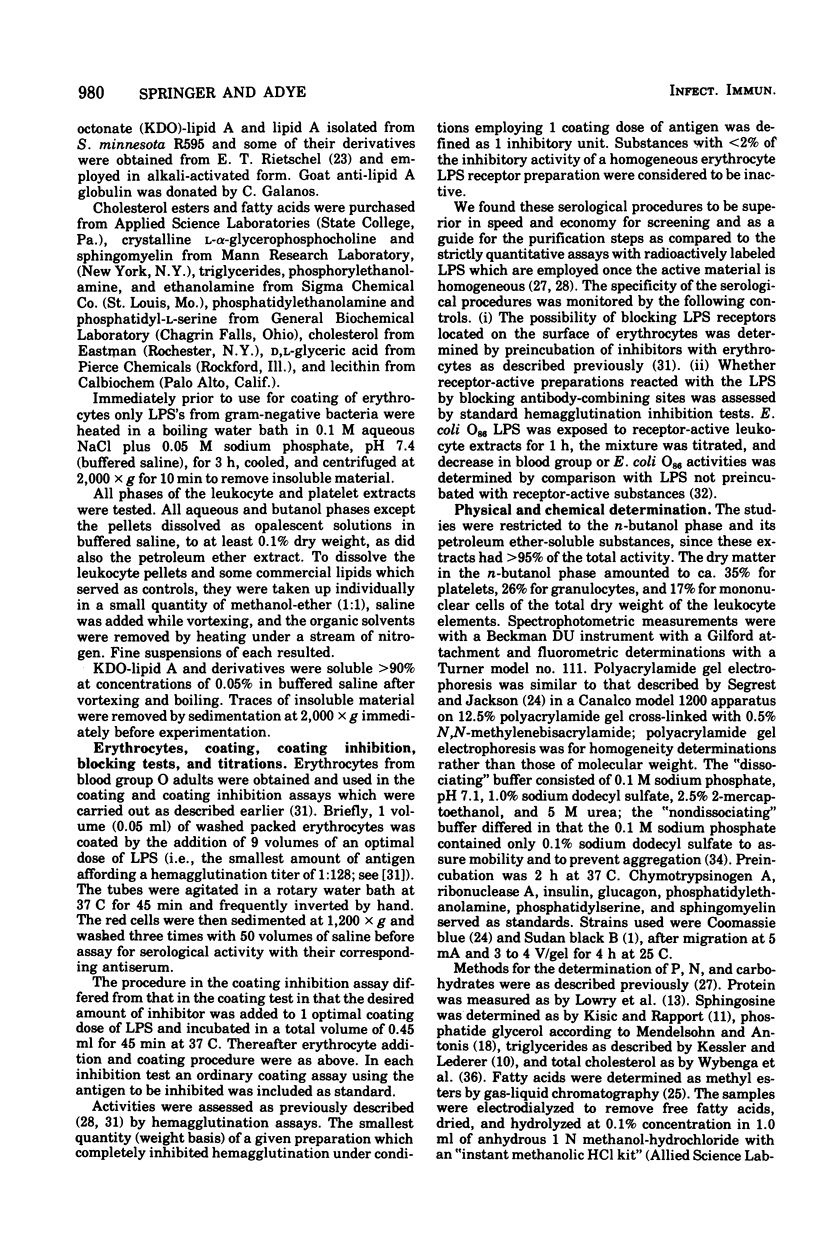
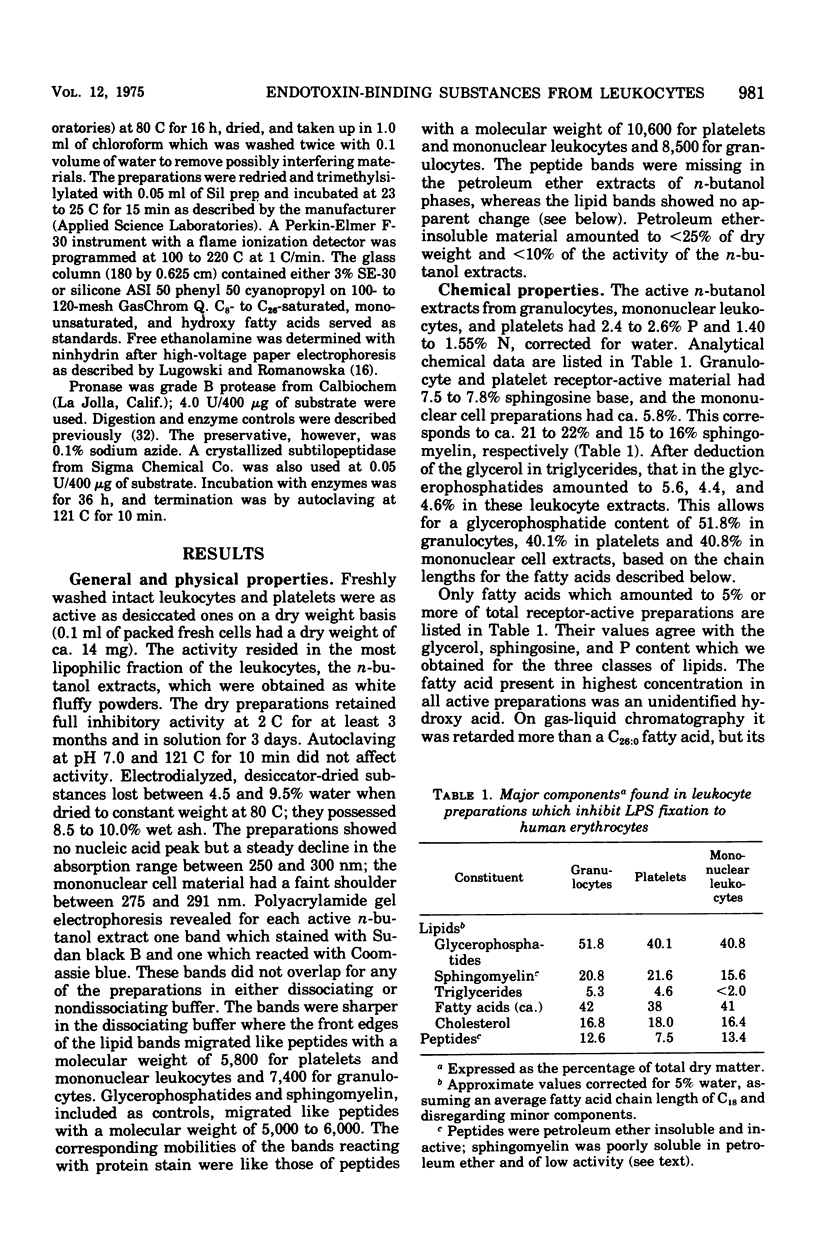
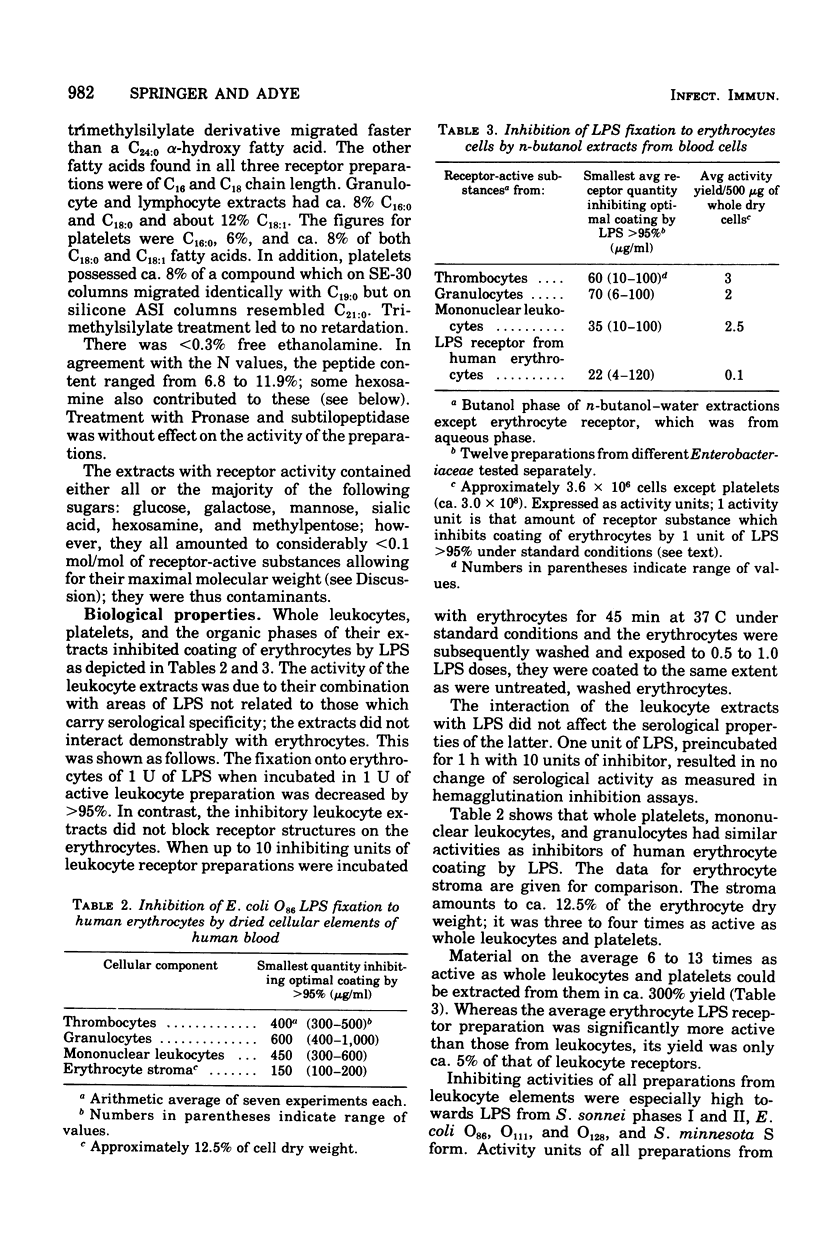
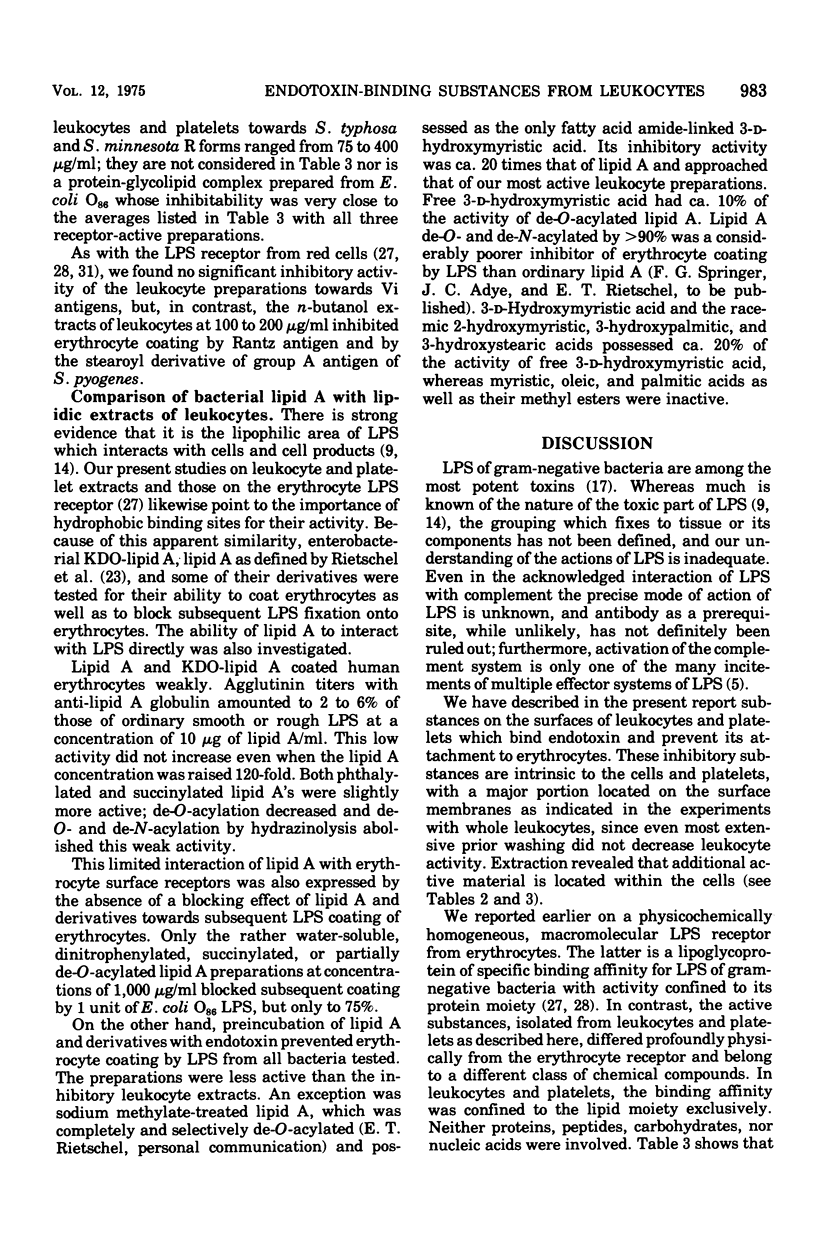
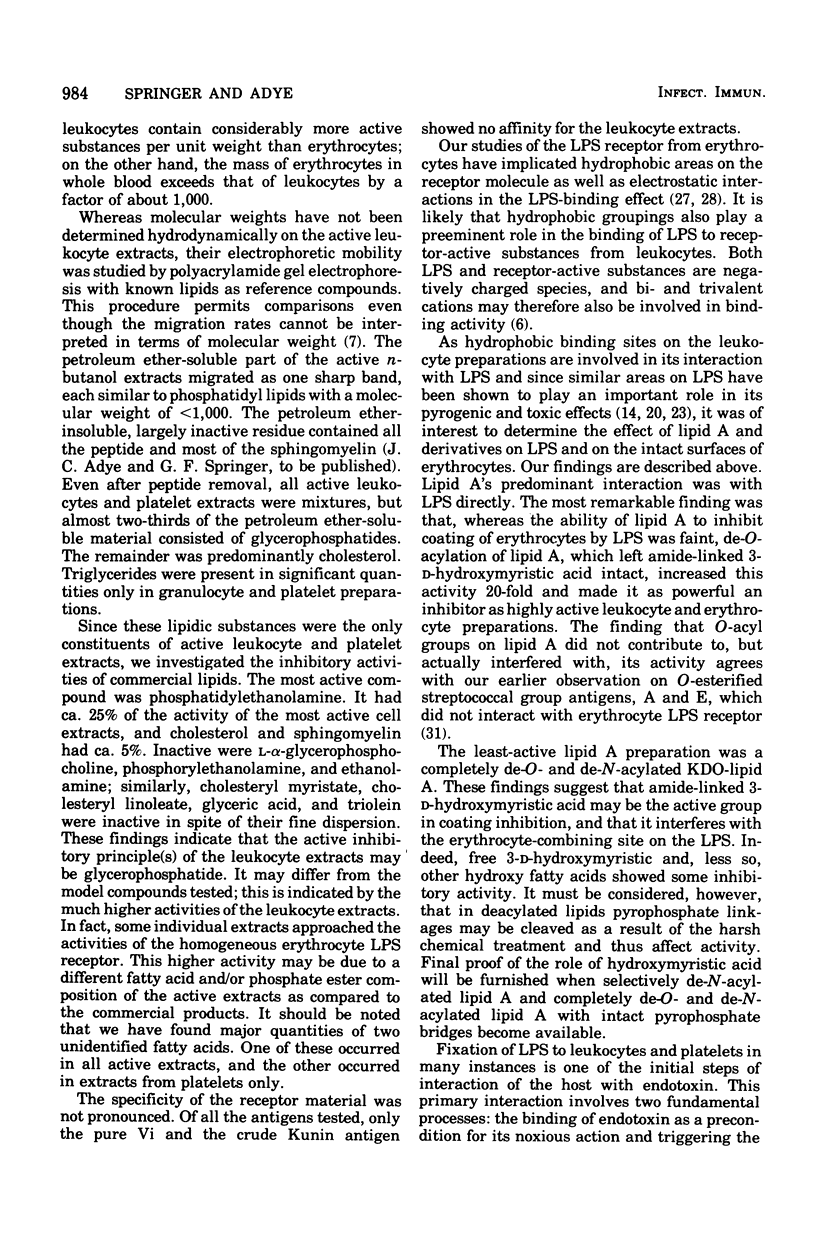
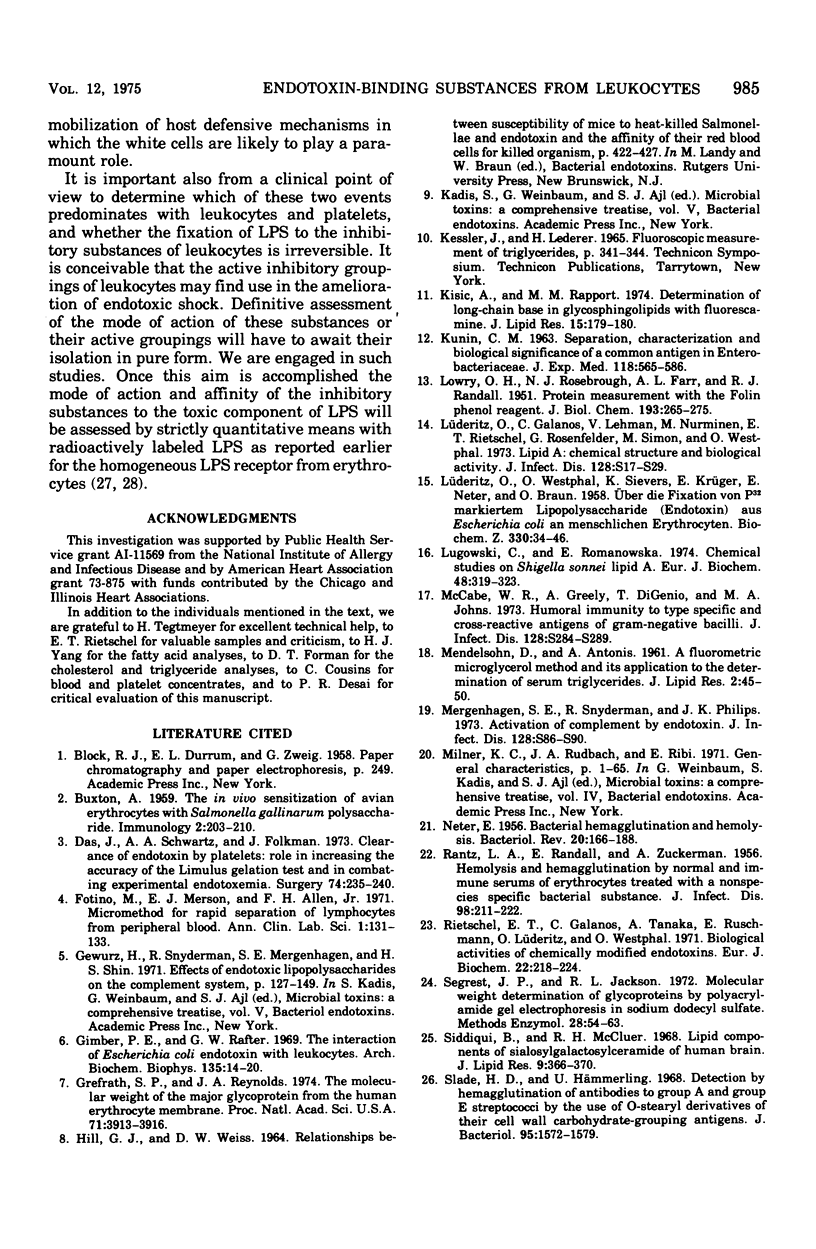
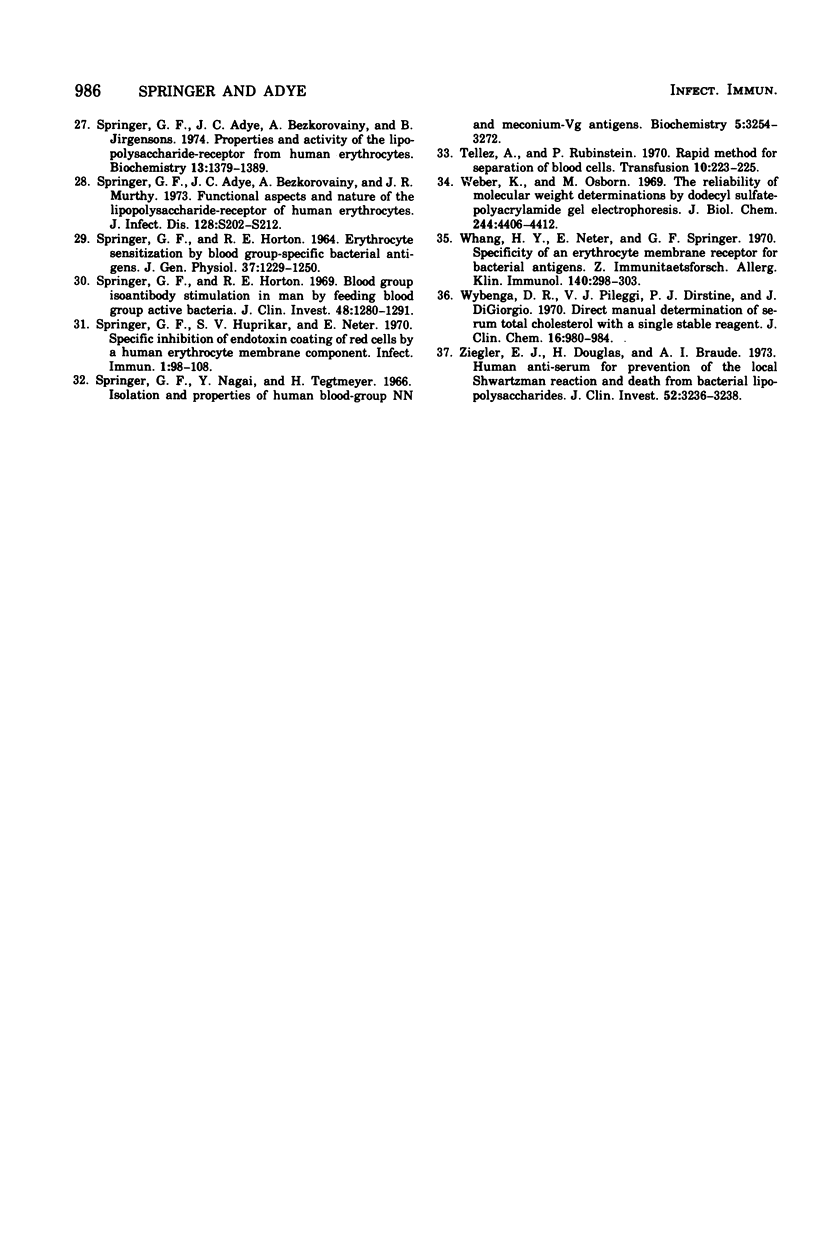
Selected References
These references are in PubMed. This may not be the complete list of references from this article.
- BUXTON A. The in vivo sensitization of avian erythrocytes with Salmonella gallinarum polysaccharide. Immunology. 1959 Jul;2:203–210. [PMC free article] [PubMed] [Google Scholar]
- Das J., Schwartz A. A., Folkman J. Clearance of endotoxin by platelets: role in increasing the accuracy of the Limulus gelation test and in combating experimental endotoxemia. Surgery. 1973 Aug;74(2):235–240. [PubMed] [Google Scholar]
- Fotino M., Merson E. J., Allen F. H., Jr Micromethod for rapid separation of lymphocytes from peripheral blood. Ann Clin Lab Sci. 1971 Sep-Oct;1(2):131–133. [PubMed] [Google Scholar]
- Gimber P. E., Rafter G. W. The interaction of Escherichia coli endotoxin with leukocytes. Arch Biochem Biophys. 1969 Dec;135(1):14–20. doi: 10.1016/0003-9861(69)90510-4. [DOI] [PubMed] [Google Scholar]
- Grefrath S. P., Reynolds J. A. The molecular weight of the major glycoprotein from the human erythrocyte membrane. Proc Natl Acad Sci U S A. 1974 Oct;71(10):3913–3916. doi: 10.1073/pnas.71.10.3913. [DOI] [PMC free article] [PubMed] [Google Scholar]
- KUNIN C. M. SEPARATION, CHARACTERIZATION, AND BIOLOGICAL SIGNIFICANCE OF A COMMON ANTIGEN IN ENTEROBACTERIACEAE. J Exp Med. 1963 Oct 1;118:565–586. doi: 10.1084/jem.118.4.565. [DOI] [PMC free article] [PubMed] [Google Scholar]
- Kisic A., Rapport M. M. Determination of long-chain base in glycosphingolipids with fluorescamine. J Lipid Res. 1974 Mar;15(2):179–180. [PubMed] [Google Scholar]
- LOWRY O. H., ROSEBROUGH N. J., FARR A. L., RANDALL R. J. Protein measurement with the Folin phenol reagent. J Biol Chem. 1951 Nov;193(1):265–275. [PubMed] [Google Scholar]
- LUDERITZ O., WESTPHAL O., SIEVERS K., KROGER E., NETER E., BRAUN O. H. Uber die Fixation von P32-markiertem Lipopolysaccharid (Endotoxin) aus Escherichia coli an menschlichen Erythrocyten. Biochem Z. 1958;330(1):34–46. [PubMed] [Google Scholar]
- Lugowski C., Romanowska E. Chemical studies on Shigella sonnei lipid A. Eur J Biochem. 1974 Oct 2;48(2):319–323. doi: 10.1111/j.1432-1033.1974.tb03771.x. [DOI] [PubMed] [Google Scholar]
- NETER E. Bacterial hemagglutination and hemolysis. Bacteriol Rev. 1956 Sep;20(3):166–188. doi: 10.1128/br.20.3.166-188.1956. [DOI] [PMC free article] [PubMed] [Google Scholar]
- RANTZ L. A., RANDALL E., ZUCKERMAN A. Hemolysis and hemagglutination by normal and immune serums of erythrocytes treated with a nonspecies specific bacterial substance. J Infect Dis. 1956 Mar-Apr;98(2):211–222. doi: 10.1093/infdis/98.2.211. [DOI] [PubMed] [Google Scholar]
- Rietschel E. T., Galanos C., Tanaka A., Ruschmann E., Lüderitz O., Westphal O. Biological activities of chemically modified endotoxins. Eur J Biochem. 1971 Sep 24;22(2):218–224. doi: 10.1111/j.1432-1033.1971.tb01535.x. [DOI] [PubMed] [Google Scholar]
- SPRINGER G. F., HORTON R. E. ERYTHROCYTE SENSITIZATION BY BLOOD GROUP-SPECIFIC BACTERIAL ANTIGENS. J Gen Physiol. 1964 Jul;47:1229–1250. doi: 10.1085/jgp.47.6.1229. [DOI] [PMC free article] [PubMed] [Google Scholar]
- Siddiqui B., McCluer R. H. Lipid components of sialosylgalactosylceramide of human brain. J Lipid Res. 1968 May;9(3):366–370. [PubMed] [Google Scholar]
- Slade H. D., Hammerling U. [Detection by hemagglutination of antibodies to group A and group E streptococci by the use of O-stearoyl derivatives of their cell wall carbohydrate-grouping antigens]. J Bacteriol. 1968 May;95(5):1572–1579. doi: 10.1128/jb.95.5.1572-1579.1968. [DOI] [PMC free article] [PubMed] [Google Scholar]
- Springer G. F., Adye J. C., Bezkorovainy A., Jirgensons B. Properties and activity of the lipopolysaccharide-receptor from human erythrocytes. Biochemistry. 1974 Mar 26;13(7):1379–1389. doi: 10.1021/bi00704a011. [DOI] [PubMed] [Google Scholar]
- Springer G. F., Horton R. E. Blood group isoantibody stimulation in man by feeding blood group-active bacteria. J Clin Invest. 1969 Jul;48(7):1280–1291. doi: 10.1172/JCI106094. [DOI] [PMC free article] [PubMed] [Google Scholar]
- Springer G. F., Huprikar S. V., Neter E. Specific inhibition of endotoxin coating of red cells by a human erythrocyte membrane component. Infect Immun. 1970 Jan;1(1):98–108. doi: 10.1128/iai.1.1.98-108.1970. [DOI] [PMC free article] [PubMed] [Google Scholar]
- Springer G. F., Nagai Y., Tegtmeyer H. Isolation and properties of human blood-group NN and meconium-Vg antigens. Biochemistry. 1966 Oct;5(10):3254–3272. doi: 10.1021/bi00874a028. [DOI] [PubMed] [Google Scholar]
- Tellez A., Rubinstein P. Rapid method for separation of blood cells. Transfusion. 1970 Jul-Aug;10(4):223–225. doi: 10.1111/j.1537-2995.1970.tb00733.x. [DOI] [PubMed] [Google Scholar]
- Weber K., Osborn M. The reliability of molecular weight determinations by dodecyl sulfate-polyacrylamide gel electrophoresis. J Biol Chem. 1969 Aug 25;244(16):4406–4412. [PubMed] [Google Scholar]
- Whang H. Y., Neter E., Springer G. F. Specificity of an erythrocyte membrane receptor for bacterial antigens. Z Immunitatsforsch Allerg Klin Immunol. 1970;140(3):298–303. [PubMed] [Google Scholar]
- Wybenga D. R., Pileggi V. J., Dirstine P. H., Di Giorgio J. Direct manual determination of serum total cholesterol with a single stable reagent. Clin Chem. 1970 Dec;16(12):980–984. [PubMed] [Google Scholar]
- Ziegler E. J., Douglas H., Braude A. I. Human antiserum for prevention of the local shwartzman reaction and death from bacterial lipopolysaccharides. J Clin Invest. 1973 Dec;52(12):3236–3238. doi: 10.1172/JCI107524. [DOI] [PMC free article] [PubMed] [Google Scholar]


